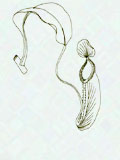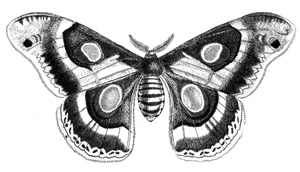

 |
 |
Miscellany
Valuing Nature
by Lisa Hopkinson and Rachel Sternby The Civic Exchange lisah@civic-exchange.org
What is the dollar value of an ecosystem? In a recent report, Wild But Not Free: An Economic Valuation of the Benefits of Nature Conservation in Hong Kong, non-profit thinktank Civic Exchange estimates that the quantifiable economic value of Hong Kong’s natural resources – its forests, country parks, wetlands and marine waters – is between HK$1.8 billion and HK$6.5 billion annually as an absolute minimum. At the upper end of this range, this is equivalent to a total value of HK$162 billion in perpetuity. This compares favourably to the one-off cost of buying ecologically valuable sites from private land owners, recently estimated by the government at around HK$70 billion.
These are striking figures, but what exactly do they mean? HK$6.5 billion does not come close to measuring the total benefits of conservation. It does not include the value of the view from Sharp Peak, the existence of Romer’s tree frog, nor does it include many of the services that nature provides for free, such as pollination, pest control or the value of biodiversity itself.
Rather, these sums are a part of an important intellectual exercise to make the value of nature more tangible and explicit to decision makers. Porcupine readers may need little convincing of the need to conserve Hong Kong’s natural areas, but for those in charge of Hong Kong’s purse strings, it is important to stress that conservation has a real economic value.
We tend to value nature at zero dollars, forgetting the services and revenue nature provides. The market does not typically assign dollar values to environmental resources, so it requires new methods to estimate their economic value. The economic value of nature can be sub-divided into direct use values, indirect use values and non-use values.
Fishing, ecotourism, recreation in country parks, and pleasure boating in eastern waters are all direct use values, defined as the economic benefit of consuming, trading or using products from nature. To take one example, Wild But Not Free estimates that ecotourism could annually generate an additional HK$4 billion in receipts if 11% of tourists (the percentage indicating interest in ecotourism) stayed an additional 1.9 days (the additional time tourists would like to stay on average) because of green attractions.
The recreation value of Hong Kong’s Country Parks is further estimated at HK$310 million based on an established method that measures the cost of travel and the cost of travel time. However, this clearly underestimates the total value of country parks, since 10.6 million visitors visit Country Parks each year and many would pay more than the cost of a bus fare to enjoy them.
Indirect use values refer to ecosystem services or "those functions of the environment which provide direct value to the well-being of humans through the maintenance of a healthy natural environment." 1 This includes the role trees play in pollution absorption, the way in which wetlands help mitigate floods, and the watershed protection value of forests.
For example, Hong Kong reservoir catchments provide the equivalent of HK$880 million of raw water that would otherwise need to be imported from the Dongjiang in Guangdong Province. This HK$880 million, however, fails to take into account the value of water security or the contribution of a forested watershed towards local climate regulation. Through water recycling by plants, forested watersheds keep areas cooler and wetter. Wild But Not Free also estimates that Hong Kong’s forests are worth HK$35 million per year as absorbers of air pollution, and its mangroves are worth HK$3 million as absorbers of nitrate pollution.
Non-use values are even more difficult to quantify. These include existence values, the amount people are willing to pay to ensure the continued existence of a species or ecosystem, even if they never intend to use or see them. How much is a Black Faced Spoonbill worth to people who may never visit Mai Po? Such values can only be estimated through carefully designed surveys, none of which have been done in Hong Kong. Surveys done elsewhere in the world, including Asia, show that existence values can dwarf other types of value.
As far as we know, Wild But Not Free is the first paper to apply environmental economics to Hong Kong. As a pioneering attempt, Wild But Not Free highlights the lack of data in this area and points to a need for primary, local research to fill in data gaps. For example, the extent to which wetlands help mitigate floods and offset the need for costly (and damaging) drainage works has never been quantitatively assessed in Hong Kong. Neither has the degree to which the quality of the natural environment affects quality of life and willingness to live and invest in Hong Kong.
While the true value of Hong Kong’s natural resources is much higher than HK$162 billion, even this dollar value makes clear that ecosystem services are critical, from an economic perspective as well as an ecological one. According to estimates which appeared in the journal Nature a few years ago, global ecosystem services are worth US$33 trillion annually, nearly twice the global GNP of US$18 trillion per year. These dollar values are tools to help us realize the importance of nature conservation. Human life and economic activity depend on the biosphere, not the other way around.
 |
Full copies of the report in English and Chinese can be found at http://www.civic-exchange.org under publications.
1 Edward Barbier in Handbook of Incentive Measures for Biodiversity Design and Implementation (OECD: 1999), pp. 29-30.
Table : Economic breakdown of benefit estimates 2
This paper estimates that the quantifiable conservation value of Hong Kong’s natural resources is between HK$1.8 billion and 6.5 billion annually 3
|
Conservation benefit |
Method |
Estimated current value (HK$ mill) |
Estimated future potential value (HK$ mill) |
|
DIRECT USE |
. | . | . |
| Marine
ecosystem -status quo -restored |
Market value |
+150 |
+180 |
| Ecotourism
-potential increase in revenue -travel costs of hikers |
Revenue Travel cost |
. |
|
| Education
-visits to outdoor education centers |
Travel cost |
+40 |
. |
|
Scientific/Medicinal |
. |
-- |
. |
| Amenity/Recreation
-hiking in country parks -outdoor conservation facilities -marine leisure -wilderness courses -mountain biking -SCUBA diving -rock climbing -property landscape views |
Travel cost Travel cost Revenue Revenue Revenue Revenue Revenue Hedonic pricing |
+310 +10 +580 +20 +100 +10 +10 -- |
. |
|
INDIRECT USE |
. | . | . |
|
Watershed protection |
Substitute cost |
+880 |
. |
| Pollution
absorption -mangroves & nutrients -trees & air pollution -vegetation & carbon sequestration -potential carbon sequestration |
Substitute cost method for all |
+3 +40 +20 |
. +390 |
|
Flood prevention |
. |
-- |
. |
|
Pollination |
. |
-- |
. |
|
Pest control |
. |
-- |
. |
|
Foreign Direct Investment 4 |
. |
-- |
. |
|
NON-USE VALUES |
. | . | . |
|
Existence values |
. |
-- |
. |
|
COSTS OF CONSERVATION |
AFCD budget |
-390 |
. |
|
TOTALS |
. |
1,800 |
6,500 |
2 All numbers have been rounded to the nearest HK$10 million.
3 This is an annual value. At a discount rate of 4% (the same discount rate used for the Disney theme park), nature conservation has a total value of HK$45 billion-$162 billion in perpetuity.
4 Some fraction of US$64 billion.
|
|
P.17-19 |
|
Porcupine! |
 Copyright © 2000 |